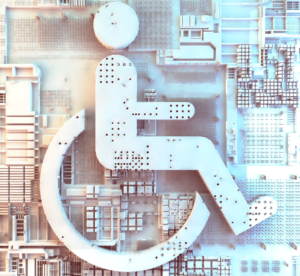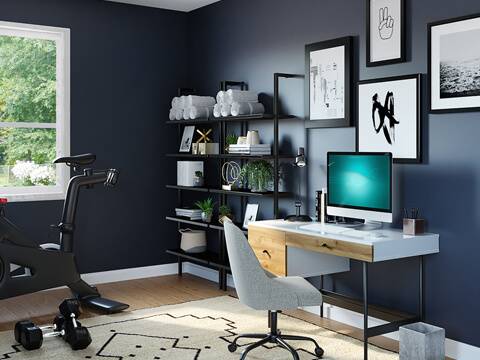The goal of inclusive design is not just to avoid exclusion but to foster an environment of belonging and participation. It’s about offering choices where a single solution might not work for everyone. For example, in digital design, this could mean providing captions for videos for those who are deaf or hard of hearing or ensuring that websites can be navigated effectively with a keyboard for individuals who cannot use a mouse.
 Inclusive design also involves actively seeking out and involving people from diverse groups in the design process, ensuring that their perspectives and needs are integrated from the very beginning. This participatory approach helps to uncover blind spots that might not be apparent to designers who don’t share the same experiences as the users they are designing for.
Inclusive design also involves actively seeking out and involving people from diverse groups in the design process, ensuring that their perspectives and needs are integrated from the very beginning. This participatory approach helps to uncover blind spots that might not be apparent to designers who don’t share the same experiences as the users they are designing for.
Moreover, inclusive design is an ongoing process. It’s not about creating a one-time solution but about continually evolving designs to meet changing needs and emerging insights. It requires a commitment to learning and adapting, and to viewing accessibility as an essential aspect of quality, rather than an optional add-on.
In the broader sense, inclusive design can contribute to social equity and justice. By designing inclusively, we acknowledge and value human diversity and the right of everyone to participate fully in society. It’s a way of designing that says, “you matter” to every potential user, regardless of their background or abilities.
Equity vs. Equality
To understand inclusive design, one must first understand the concept of equity. Often incorrectly used as a synonym for equality, equity and equality are interconnected but separate concepts. Equality is widely agreed upon to mean providing the exact same resources and opportunities regardless of their needs or circumstance. When building for equality, things like socioeconomic status, ability, religion, culture, age, and background are not considered in the design or construction. Contrastingly, equity is a concept and practice that promotes providing everyone with the amount of resources necessary to afford them equal opportunity depending on their circumstances. Grounded in the ideas of fairness and justice, equity in construction requires that aspects of the client or inhabitant’s life be considered and respected when designing and constructing. These aspects would vary from person to person and may encompass anything from culture, ability, age, lifestyle, socioeconomic status, religion, and many more. For example, a home designed for a wheelchair user in Europe may vary from that of an abled bodied practicing Buddhist in the United States. Equality in construction would result in these individuals having the same house while equitable construction may result in an accessible house for the wheelchair user and incorporate space for a shrine and a place for at home worship.
How to Design for Equity
Designing with equity and inclusivity in mind may appear to be a difficult and daunting task. One of the easiest ways to ensure inclusive design is by including a variety of perspectives in your design process. This can help to ensure that your design and build adhere to the specific needs of the client or the primary users. Examples of ways you can design for inclusivity include designing for/with:
- Equitable Use – When designing for equitable use, the amount of people of various ability levels, backgrounds, cultures, ages, and circumstances is maximized. This can range anywhere from accessible pathways in public spaces to including braille signage in buildings, parks, public transportation and other commonly used spaces.
- Intuitive Use – Intuitive use aims to make products and services easy to understand and use for as many people as possible. This means that anyone should be able to use the product regardless of the user’s experience, knowledge, language skills, or current concentration level. Products designed with intuitive use in mind typically do not require training or instructions to operate. If instructions are necessary, they are simple, efficient, and accessible. Another key feature of intuitive use design is consistency in design and production. For example, intuitively designed elevators would have clear labels and signage, including accessibility features for the physically, visually, and auditorily impaired. The user interface would be simple and easy to understand and deviate as little as possible from the industry standard.
- Low Physical Effort – Designing for low physical effort increases accessibility for people who are easily fatigued. This can include people with disabilities, children, the elderly and many more. This can be implemented in a variety of ways including limiting the number of stairs, prioritizing ramps and accessible pathways, as well as putting in accessible and easy-open doors.
- Body Fit – Human bodies come in all shapes and sizes and therefore accommodating a wide range of body sizes and abilities is necessary when designing for equity. This can include a wide range of heights and weights, but also means accommodating for mobility aids and devices.
- Cultural Awareness – It is important to respect cultural values and norms when designing for equity and inclusion. Although this varies based on location and primary populations. When designing with cultural awareness it makes products and services accessible and usable to a wider audience. This can range from including a variety of religious spaces in your office building to including more language options for user interfaces.
Maximizing the User Base
In many cases, it is impossible to accommodate everyone when designing a product. That’s why one of the key principles of the inclusive design-build process is to maximize the user base. Your  project or product may not be usable by all, but it should be usable by as many people as possible. This process should begin by making sure your designs adhere to the laws outlined in the Americans with Disabilities Act (ADA), but to be truly inclusive, the project needs to be more than compliant. The Americans with Disabilities Act represents the minimum required by law and should be seen as the first step toward inclusive and equitable design. True inclusivity can be achieved by combining ADA compliance with other equitable practices such as incorporating universal design principles, consulting the disabled community, accounting for a variety of mobility methods and levels, and designing flexible and adaptable spaces.
project or product may not be usable by all, but it should be usable by as many people as possible. This process should begin by making sure your designs adhere to the laws outlined in the Americans with Disabilities Act (ADA), but to be truly inclusive, the project needs to be more than compliant. The Americans with Disabilities Act represents the minimum required by law and should be seen as the first step toward inclusive and equitable design. True inclusivity can be achieved by combining ADA compliance with other equitable practices such as incorporating universal design principles, consulting the disabled community, accounting for a variety of mobility methods and levels, and designing flexible and adaptable spaces.
Maximizing the user base also includes designing for cultural inclusivity. This includes embracing interculturalism and multiculturalism. Be sure to consider cultural diversity as well as the integration and blending of different cultures in the community your projects are in. Additionally, be sure to consult members of the community and various cultures. Getting the perspective of the community you are designing and building for is one of the best ways to ensure that both the process and the product is inclusive and equitable. Structures and products designed prioritizing inclusivity and equity for all should be safe and welcoming for people from all cultural backgrounds. Additionally, it is important to remember the cultural inclusivity extends beyond physical space and into the social environment that the space and design choices foster.
Ask Questions
During the design-build process, you should never stop asking yourself and your team questions.
Is this ADA compliant?
Is this design equal or equitable?
Are we maximizing the user base?
Have we consulted members of the community we are designing for?
Are we maximizing our user base?
Conclusion
In conclusion, inclusive design is a powerful approach to creating a more equitable world. It challenges designers to think beyond the norm, to be empathetic and innovative, and to create with a deep understanding of the rich tapestry of human experience. It’s about designing for all of humanity, in all its diversity and complexity.






